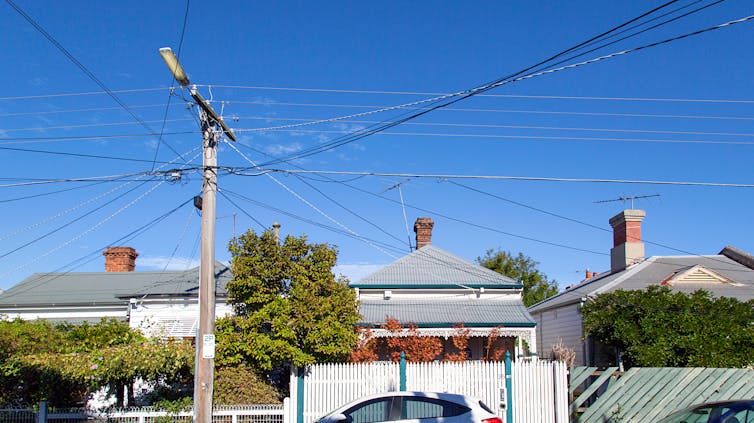Human Rights Watch shows systematic, officially sanctioned religious freedom violations.
DUBLIN, February 20 (Compass Direct News) – A Human Rights Watch (HRW) report released in January details serious and ongoing abuses against the Chin people, a minority group in Burma’s northwest who claim to be 90 percent Christian.
HRW’s research echoes a 2004 report by the Chin Human Rights Organization (CHRO) that described targeted abuse of Christians in Chin state, with the Burmese army subjecting pastors and church members to forced labor, arbitrary arrest and detention, torture and sometimes death.
While religious oppression is extreme in Chin state, restrictions also apply elsewhere in Burma, also known as Myanmar. Most recently, officials in January forced the closure of more than 100 churches in Rangoon and ordered owners of apartment buildings and conference facilities not to rent their properties to religious groups.
Based on interviews with Chin refugees in India and Malaysia between 2003 and 2008, HRW’s report describes how an increasing number of army battalions stationed in Chin state since 1988 have inflicted forced labor and arbitrary fines on the Chin people, as well as bullied them away from Christianity toward Buddhism.
“When we meet the army, we are shaking,” a Chin refugee pastor told HRW. “Whatever they want is law.”
The HRW report, entitled “We Are Like Forgotten People,” notes that soldiers frequently forced Christians to donate finances and labor to pagoda construction projects in areas where there were few or no Buddhist residents.
They also occasionally forced Christians to worship in Buddhist pagodas. One Chin pastor described how Burmese soldiers brought him to a pagoda and prodded him with their guns, commanding him to pray as a Buddhist.
“They said that this is a Buddhist country and that I should not practice Christianity,” he told HRW.
The military forced village headmen to present “volunteers” for military training or army construction projects and secured “donations” such as food or finance for army battalions. Soldiers severely beat or detained headmen if a village failed to meet quotas, seizing livestock or property in retribution.
Pastors often faced similar treatment, particularly if church members were accused – often without proof – of involvement with the Chin National Front insurgency group. HRW listed arrest, detention and torture as methods used against those accused of being part of the Chin National Front, based across the border in northeast India. Torture included beatings with sticks or guns and electric shocks via metal clips attached to high-voltage batteries. Such measures were also used to crush dissent against army policies such as failure to pay extortionate and arbitrary fees.
The military government promoted Buddhism over all other religions in Chin state through threats and inducements, destroying churches and other religious symbols, and restricting the printing and importing of Bibles and other Christian literature, HRW reported.
A judge in 1999 sentenced one man from Falam township to three years in prison for bringing Chin language Bibles into Burma, contravening Burma’s 1965 Censor Law. Authorities also burned 16,000 copies of Chin and other ethnic language Bibles brought into neighboring Sagaing Division, another Chin majority area, in 2000.
‘Campaign of Ethnocide’
CHRO’s 2004 report, “Religious Persecution: A Campaign of Ethnocide Against Chin Christians in Burma,” explained that Christianity had become inseparable from Chin culture following the arrival of American Baptist missionaries in 1899.
The report, based on information gathered in Chin state, gave numerous examples of the destruction of churches and crosses, the burning of Bibles and restrictions on other religious publications and activities between 1993 and 2004 – including the extrajudicial killings of four Chin Christians in 1993.
Burmese authorities routinely denied permission for the construction of new churches and required permits for large church gatherings, although lengthy bureaucratic processes meant that most of these gatherings were eventually postponed or cancelled.
A September 2008 U.S. Department of State report confirmed that Chin state authorities have not granted permission to build a new church since 2003.
As recently as last November, a government official ordered residents of Tayawaddy village in neighboring Sagaing Division to destroy the foundations of a new church building erected by members of a Chin Christian student fellowship. A report in the Chinland Guardian claimed villagers were subsequently ordered not to rent their homes to Chin students or the homes would be destroyed.
Enticement to Convert
CHRO’s report gave clear evidence of government support for coerced conversions. For example, the government offered free secular education to several children from impoverished families, only to place them as novice monks in Buddhist monasteries in Rangoon.
The Ministry of Religious Affairs has also sent Buddhist monks to villages and towns throughout Chin state under the Hill Regions Buddhist Mission program, one of several Buddhist missionary initiatives highlighted on the ministry’s website. Chin residents who spoke to CHRO likened these monks to “military intelligence” operatives who worked in partnership with Burmese soldiers to control the Chin people.
According to one Chin resident, “Anyone who doesn’t abide by the monks’ orders is reported to the State Peace and Development Council [Burmese government officials] and punished by the army.”
Another Chin man from Matupi township attended a government-sponsored “social welfare” training session only to discover that it was a propaganda session led by a Buddhist monk.
“In the training we were taught the 17 facts of how to attack and disfigure Christians,” he explained.
The 17-point method encouraged converts to criticize Christian ways of life as corrupting culture in Burma, to point out weaknesses in Christianity, and to attack Christians by both violent and non-violent means.
“We were promised that 1,200 kyats per month [US$190] would be provided to those families who became Buddhist,” the training participant added. That amount of money is significant in the Burmese economy.
The instructor also ensured participants that they would be exempt from “portering” and other forms of forced labor and compulsory “donations” if they converted, and that the government would provide education for their children.
“I became a Buddhist because of such privileges rather than because I think Buddhism is better than Christianity,” the Chin participant told CHRO.
Religious Policy Elsewhere
According to CHRO, both the Burmese army and the monks are pursuing an unofficial government policy summed up in three words; “Amyo, Batha, Thathana,” which translates as “One race, one language, one religion” – or Burman, Burmese and Buddhist.
This policy was exemplified by the forced closure in January of more than 100 churches in the capital, Rangoon.
Officials on Jan. 5 invited pastors from more than 100 Rangoon churches to a meeting where they were ordered to sign documents pledging to cease operation of their churches or face imprisonment. About 50 pastors attended, according to Burmese news agency Mizzima.
A CHRO spokesman told Compass yesterday that a significant number of these churches were ethnic rather than majority Burman churches.
In mid-January, officials ordered several other major Rangoon churches to close, including Wather Hope Church, Emmanuel Church and an Assemblies of God Church. (See Compass Direct News, “Burma Clamps Down on Christians,” Jan. 21.)
Officials from the Ministry of Religious Affairs in January summoned the owners of buildings where churches met and ordered them not to rent their properties to religious groups, according to another local online news source, the Democratic Voice of Burma.
In the late 1990s, Burma stopped issuing permits for land purchase or the construction of new churches in Rangoon and elsewhere, leading many Burmese Christians to conduct services in rented apartments or office buildings.
The church closure orders may simply be an extension of Burma’s existing religious policies, which elevate Buddhism in an effort to solidify national identity. The country’s population is 82 percent Buddhist, 9 percent Christian and 4 percent Muslim, with traditional ethnic, Chinese and Hindu religions accounting for the rest.
In a 2007 report describing religious persecution throughout Burma, including Chin state, Christian Solidarity Worldwide cited the “Program to Destroy the Christian Religion in Burma,” a 17-point document that had circulated widely in Rangoon. Allegedly authorized by the Ministry of Religious Affairs, the program’s first point declared that, “There shall be no home where the Christian religion is practiced.”
The Ministry of Religious Affairs subsequently pressured religious organizations to publicly condemn CSW’s report and deny all claims of religious discrimination in Burma.
Report from Compass Direct News


![]()
